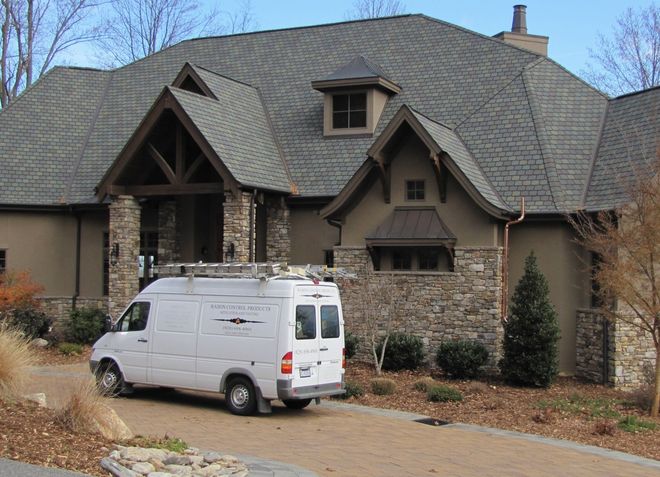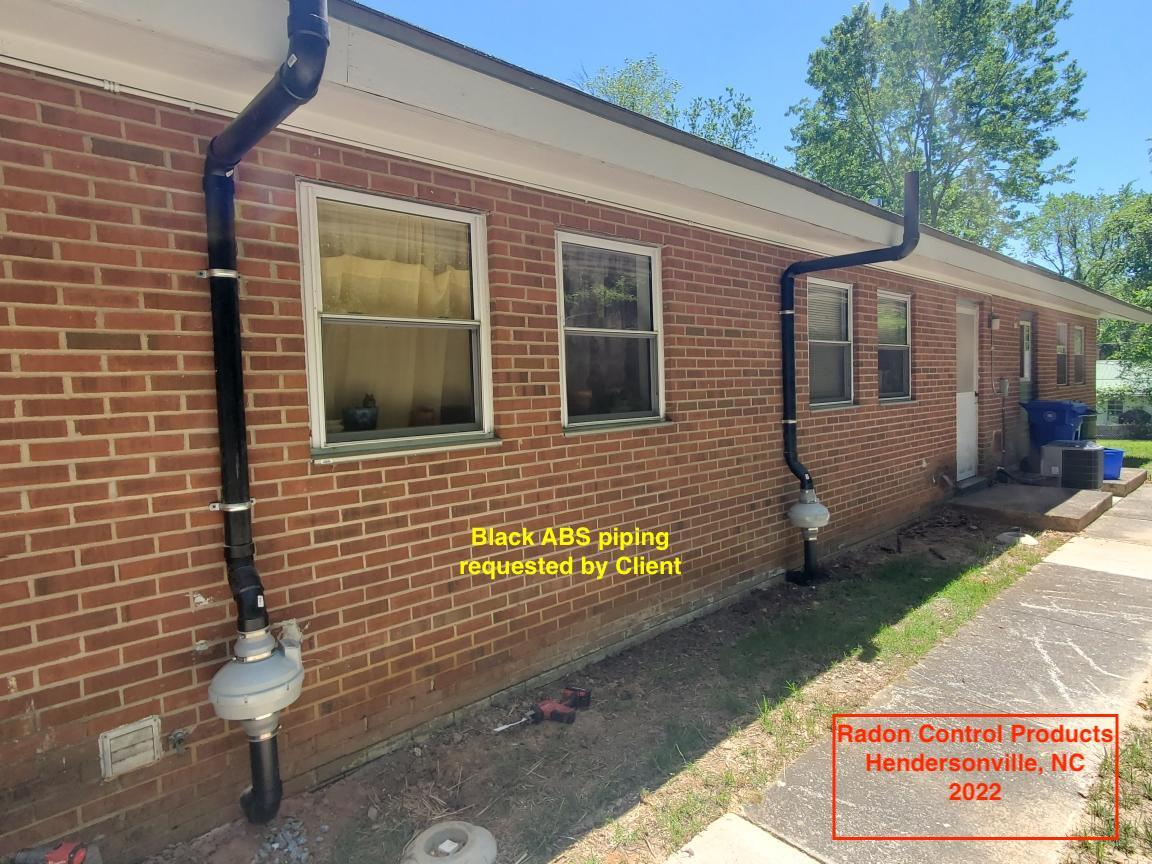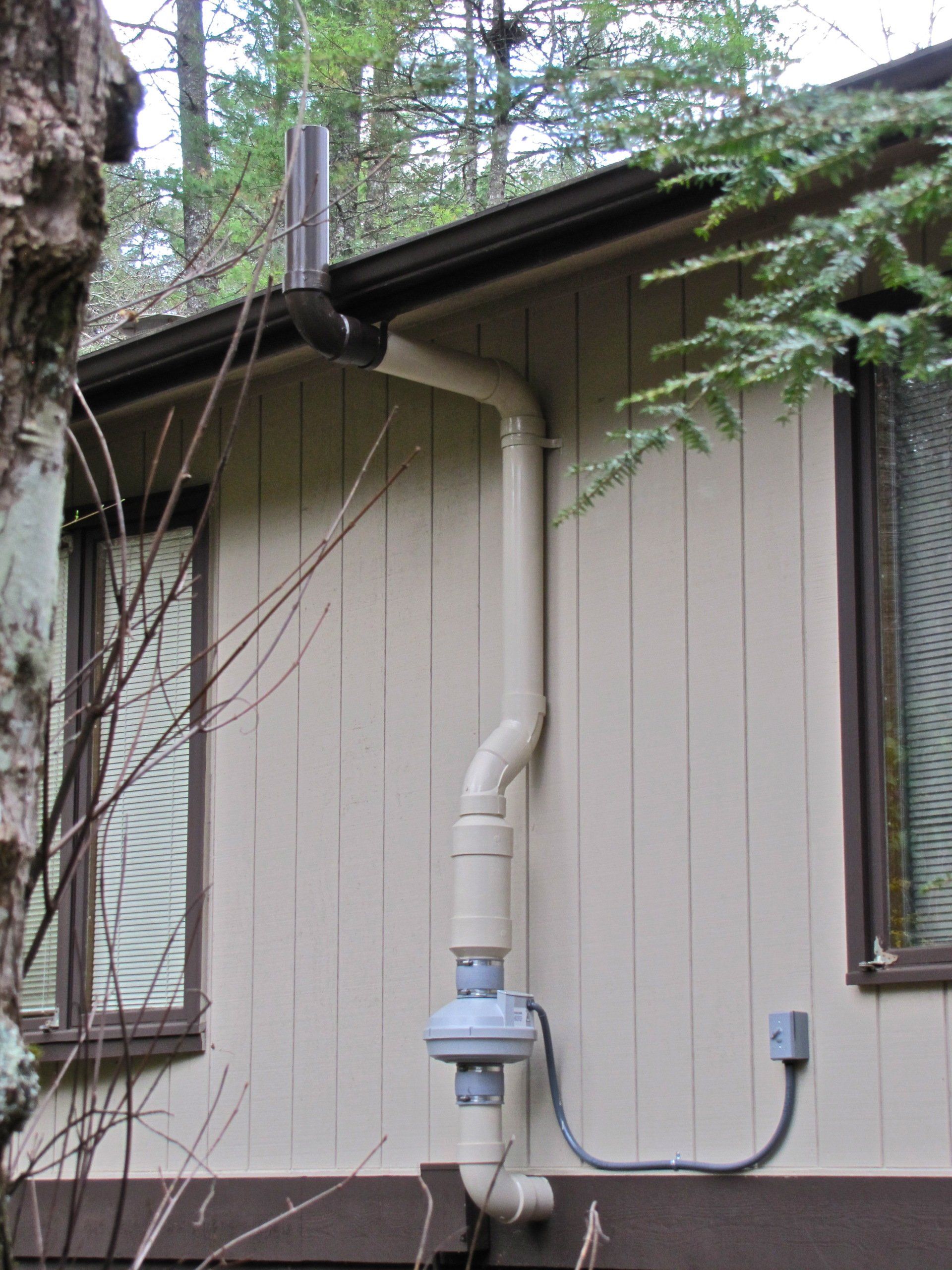Mailing Address: PO Box 6263 Hendersonville, NC 28793
Physical Address: 311 White St Hendersonville, NC 28739
Certified. Professional.
Insured

Your Trusted Radon Testing & Mitigation Since 1997
Radon Control Products is a full-time, full-service radon testing and mitigation company in Hendersonville, NC. Offering testing and mitigation services for indoor air and well water in both residential and commercial buildings, our team at Radon Control Products can help keep your family and customers safe. With our passive and active mitigation systems installation, let our team be your trusted solution for all things Radon. Serving all homes in Western North Carolina and upstate South Carolina, please call (828) 698-4960 today!
Your Trusted Radon Testing & Mitigation Since 1997
Radon Control Products is a full-time, full-service radon testing and mitigation company in Hendersonville, NC. Offering testing and mitigation services for indoor air and well water in both residential and commercial buildings, our team at Radon Control Products can help keep your family and customers safe. With our passive and active mitigation systems installation, let our team be your trusted solution for all things Radon. Serving all homes in Western North Carolina and upstate South Carolina, please call (828) 698-4960 today!
Why People Choose Radon Control Products
Decades of Experience
Radon Control Products is Henderson County's oldest professional radon company, with years of experience in radon mitigation and testing for both indoor air and well water.
Committed
Radon is our business...our only business. Radon Control Products are committed to doing things right the first time and exceeding all our client’s expectations
Insured
Radon Control Products has radon-specific liability, professional, and pollution insurance, as well as Workman's Comp. (NOTE: home inspector's and General Contractor's policies do not cover radon-related work or health risk.)
Professional
We maintain AARST-NRPP certification for both mitigation and measurement. We hold membership in the American Association of Radon Scientists and Technologists, the Better Business Bureau, Hendersonville Chamber of Commerce, Henderson County Board of Realtors, and Integrity4Higher.
Knowledgeable
Radon Control Products keeps up with the latest information, training, and techniques in our industry to ensure accurate and reliable services for every client.
Diplomatic
With an established track record with every client, trust Radon Control Products is your top solution to test and mitigate radon from your home or business.
Realtor Services
Providing local realtors radon training for your office, our team at Radon Control Products can help you educate your clients on the dangers of radon and how to go about protecting their homes and family from this gas. With our free radon literature and discounted work on realtor-owned properties, let our team help you understand the dangers of Radon to help you close the deal!
Going Green
Ensuring your home, business, and environment are safe, Radon Control Products limits waste by driving a fuel-efficient vehicle and installing Energy star certified fans. Active radon mitigation systems also remove water vapor, which can save significant energy by reducing the run-time of dehumidifiers and air conditioners!
See What Our Clients Have Been Saying!
List of Services
-
⭐⭐⭐⭐⭐Item Link List Item 1
Radon Control installed our Radon system in 2007 - Installation was quick and professional- the results were impressive- radon count was well within acceptable parameters and humidity went way down.. 10 years later the motor for the pump failed- good life for a continually running device. The Radon Control folks had a replacement in stock and got it back going in minutes- Very pleased.
-Charles W.
-
⭐⭐⭐⭐⭐Item Link List Item 2
Adam came out and added a third tap to our radon system and it’s working great. Levels are below 1.0.
-Robert C.
-
⭐⭐⭐⭐⭐Item Link List Item 3
So very helpful on the phone. Told me my pressure indicator oil had just evaporated a little. Walked me through checking it, told me everything was as it should be and saved me a service call. When the fan goes out, I’ll definitely call this company for replacement.
-Beth M.
-
⭐⭐⭐⭐⭐Item Link List Item 4
Very good experience friendly and professional.
-Rob C.
-
⭐⭐⭐⭐⭐Item Link
Great company to work with. Girl on the phone when call extremely friendly and helpful. Guys doing the job great!
-Jerry G.
-
⭐⭐⭐⭐⭐Item Link
They did a good job.
-Ben C.
Share Your Experience!
Why We Do What We Do
Local resident and customer Eddie Metcalfe tells his story in this one-minute video that won a national EPA video contest.
In need of experienced Radon testing and mitigating? Call (828) 698-4960 today!
CONTACT INFORMATION
Phone: (828) 698-4960
Email: radoncontrol@cs.com
Mailing Address : PO Box 6263 Hendersonville, NC 28793
Physical Address: 311 White St Hendersonville, NC 28739
Business Hours
- Mon - Fri
- -
- Sat - Sun
- Closed







OUR LOCATION











